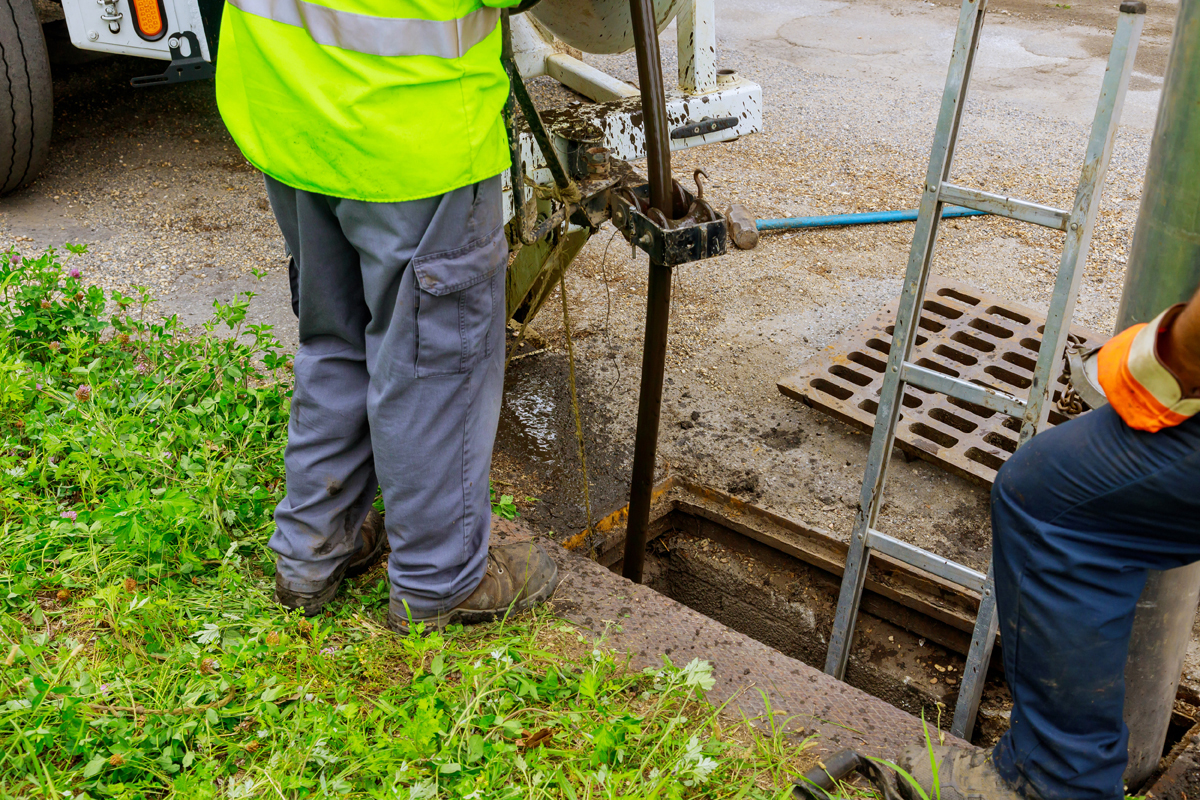Septic tanks are crucial components of any home, especially ones in rural areas where municipal sewage systems are not available. These systems are designed to manage wastewater, separate solids from liquids, and to breakdown organic materials naturally. Like any system, though, your septic tanks needs regular inspections and maintenance. Below, we walk you through the inspection of a septic tank as a DIY project.
Signs You Need To Inspect A Septic Tank
Here are a few things to look out for when it comes to septic tank inspections, repairs, and replacements.
Septic Tank Age
Septic tanks certainly have an expected lifespan, as mentioned above. You can expect most tanks to last between 20-40 years. It’s always best to consider replacing the tank if it is approaching this age range. Even if your tank hasn’t shown any signs of issues, being proactive with a replacement is much better than dealing with more intensive repairs down the road.
Frequent Issues
When the drains are routinely slow, foul odors linger, or backups are frequent, these are clear signs of septic tank issues. When these problems persist despite repairs, the tank could ultimately be failing.
Contamination
Septic failures can contaminate the surrounding groundwater and soil, which undoubtedly poses threats to your wellbeing and the environment. This is especially important if your water source is a well on your property.
It’s time to call a professional if you notice a high level of nitrates in the water. Nitrates can be harmful to your health and can indicate that the tank is not properly functioning.
How To Inspect Septic Tank
The inspection of a septic tank should be seen as a critical task done to prevent any potential issues. Use the step-by-step guide below to properly inspect the tank.
For this DIY task, you’ll need the following tools:
- Gloves and safety goggles.
- Ruler or measuring stick.
- Septic tank riser, if applicable.
- Shovel.
- Flashlight.
- Camera and/or notebook.
Step 1. Find The Tank
- Begin by locating the access points of your septic tank.
- This could require consulting the property’s blueprints or even contacting your local health department.
Step 2. Open The Access Covers
- Use a shovel at this time to carefully remove any debris or dirt that may be covering your access points.
- Always be cautious when lifting these covers, as they can be quite heavy.
Step 3. Inspect The Liquid Level
- With the help of a ruler or measuring stick, inspect the liquid level inside the tank.
- This should be about one-third full.
- A higher-than-normal liquid level could indicate a blockage.
Step 4. Check The Sludge Layer
- In order to measure the sludge layer, insert a stick into the tank.
- Check to see if the sludge is more than one-third of the tank’s depth.
- If it is, then this calls for a pump-out.
Step 5. Examine The Baffles
- Check both the inlet and outlet baffles for any visible signs of either corrosion or damage.
- These components are essential for separating solids and proper flow.
Step 6. Look For Leakage
- Check the surrounding area for any signs of leaks or pooling water.
- Oftentimes, this can indicate a failing system, overall.
Step 7. Check Drain Field
- Walk over the drain field area, feeling for any soft spots.
- If any areas appear unusually green, this may indicate a problem with the system.
DIY Vs Professional Septic Tank Inspection
The typical professional septic tank inspection will cost between $150-$450 for routine maintenance. A real estate transaction or Title 5 inspection can be more costly, with prices ranging from $300-$650.
As mentioned, most inspection costs will range from a low of $150 to a high of $650. However, prices will undoubtedly vary based on location, size of the tank and system, and whether a visual or full inspection is needed.
Here is a quick breakdown of the national average costs of a septic tank inspection:
| Septic Inspection | National Average |
| National Average Cost | $290 |
| Minimum Cost | $100 |
| Maximum Cost | $1,100 |
| Average Cost Range | $150-$450 |
The typical Title 5 inspections should cost between $300-$650. This inspection is required in some states for the sale or transfer of a home. It can also be required with the addition of a swimming pool, bathroom, or bedroom.
Either the homeowner or seller is responsible for payment of the inspection. A lot of states mandate septic inspections every 2-5 years.
A-American Septic Service offers Septic Tank Inspections in Phoenix
A-American Septic Service can help you if you have any septic tank related questions in Phoenix. We can cover anything from septic maintenance and repair to total septic tank replacement. Call us today at 602-254-5448!







